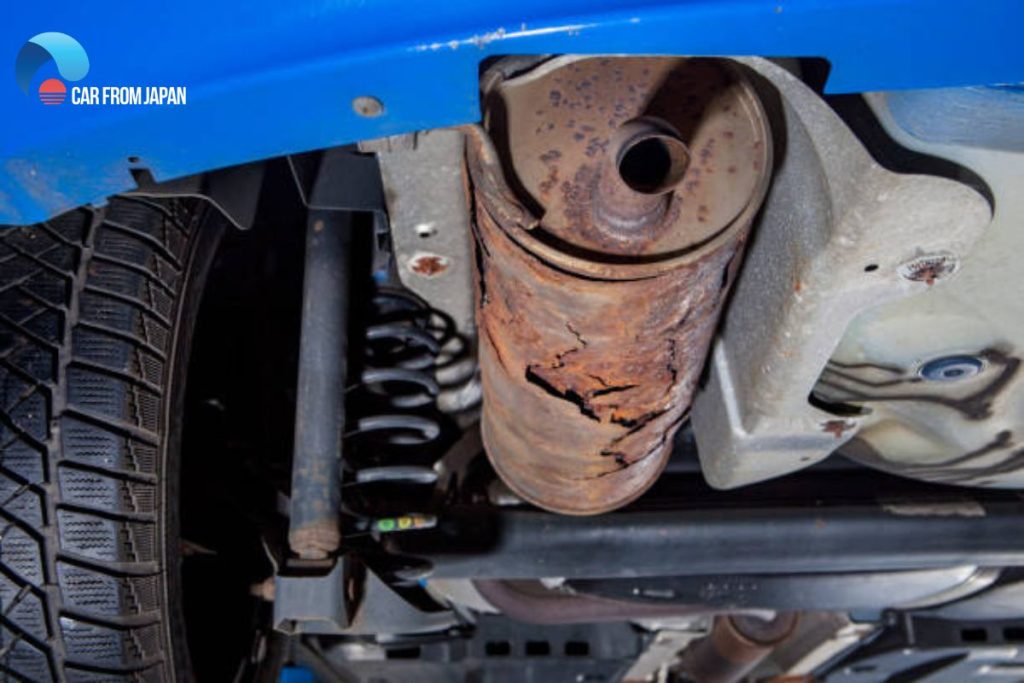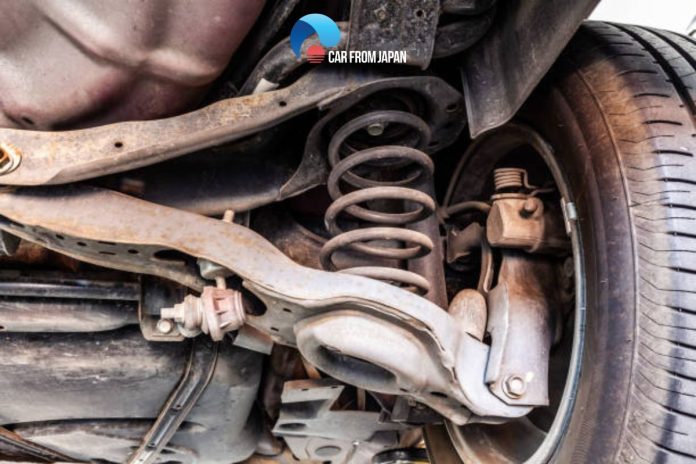A shock absorber does the job of keeping the tires on the ground on a bumpy road, helping the driver to have control of the vehicle. As it’s always in use, it wears out quickly and loses the ability to function properly. There are some symptoms of a bad shock absorber that you need to pay attention to because bad shocks can make your rides super uncomfortable.
Contents
What Do Shock Absorbers Do In Your Car?
The change in direction of the vehicle during movement, combined with the rarely flat road surface causes the wheels to fluctuate due to these impacts, thereby affecting the vehicle’s body and passengers. Although the spring can reduce the impact force, the shocks from the road surface and the weight of the wheel cause it to fluctuate a lot.
To overcome this phenomenon, the shock absorber is needed – the part that helps prevent oscillations. Among the popular types of shock absorbers are: 1-tube Shock Absorbers, 2-tube types, 2-tube pressure steam, and hydraulic… A 2-tube shock absorber is used on vehicles.
Simply understand that shock absorbers are a part of your car that help ensure safety and limit the risk of accidents for drivers. Normally, the shock absorber is located in the car’s suspension system. They are responsible for minimizing strong vibrations when the vehicle moves through bad roads or potholes…
Tell-Tale Symptoms Of A Bad Shock Absorber
Many things can go wrong with shocks, and these will happen right under your nose. Knowing about the symptoms will help you figure out the source of the problem and make an educated decision.
Uneven wear on tires
Shocks assist in keeping the tires on the ground, so it makes sense that a failing shock absorber won’t let the treads rub away evenly. It’s a huge red flag because it may cause accidents if the tires don’t stay firmly on the road. Patchy worn-out areas increase the risk of hydroplaning and sudden flat.
Vibrations while driving
It’s another shock absorber problem that you need to worry about. If the shocks are fine, there should not be any vibration felt through the steering wheel. It may happen when the fluid inside the valve or piston seal leaks and causes an overreaction with every tiny bump. You should take immediate action because the shaking could be intense at high speeds, leading to losing control of the car.
Watch out the noises

Just like vibrations, unusual sounds such as rattling or rocking could be the reasons for a failing shock absorber. A heavily worn shock could be the culprit if driving on uneven surfaces feels like experiencing mini earthquakes every minute. Riding under such a circumstances will be highly uncomfortable. Besides, such massive shaking and rattling will put pressure on other car components, leading to wearing them out before their time.
Slow response of the gas pedal
The worse the condition of the shock, the more time your vehicle to respond to the brakes. A failing shock absorber will increase the stopping distance by 20%. For example, if your car used to go no more than two feet before properly stopping, a defective shock can cause it to cover more distance after hitting the brake. Such a problem needs immediate repair because it can cause fatal accidents.
Nose-diving while braking
It’s a severe shock observer problem because it can make the driver lose control of the car, which can be deadly in wet weather. If the fluid in the valve or piston leaks through the seal, the slightest pressure on the brake will result in extreme piston movement within the cylinder. It may cause swerving by shifting the vehicle’s weight to the opposite direction of your turn or a nose dive by swinging the weight more than normal at the time of braking.
Good shock and bad shock absorber: How to know:
How To Test Shock Absorbers Periodically?
Shock absorbers often have to operate stressfully, so it is difficult to avoid damage or wear out, so periodically checking car shock absorbers is extremely necessary. The test is carried out according to the following steps:
Step 1: The driver parks the car on flat ground, and then pulls the handbrake.
Step 2: Observe the shock absorbers on both sides of the front wheel to check. If there is a high or low difference between them, this is a warning indicating an abnormality. The standard parameters of the vehicle suspension system are the most accurate basis for determining the balance of the shock absorbers on both sides.
Step 3: The driver continues to check the springs, bolts, and rubber cushions… to see the condition. If there are any unusual signs such as cracks, breaks, or damage, replacement is needed.
How To Prevent The Shock Absorber From Wearing Out?
Here are the best tips to prevent your shock absorbers from wearing out prematurely:
Drive smoothly
Remember how bad shocks cause “nose-diving” and “squatting”? Well, aggressive driving habits that cause those things will wear out good shocks faster.
Brake and accelerate smoothly. Constant, hard braking and jackrabbit starts put a huge amount of repeated stress on your shocks as they struggle to manage the car’s weight transfer. A smoother driving style is much easier on your entire suspension.

Don’t overload your vehicle
Your car’s shocks are designed to work with a specific weight range. Overloading your car with heavy equipment, cargo, or towing a trailer that’s too heavy forces them to work much harder than they were designed for. Consistently overloading your vehicle will dramatically shorten the life of your shocks.
Keep your tires in good shape
Your tires are the first line of defense for your suspension. They absorb all the small, high-frequency bumps before they even get to the shocks.
- Keep them properly inflated. Underinflated tires can’t absorb bumps properly, passing that extra stress on to the shocks.
- Replace them when they’re worn. Bald tires have no tread depth to cushion impacts, meaning your shocks have to do more work.
Car shock absorbers will work best when the car drives through rough terrains. This is also the time when the suspension system must operate at its highest capacity and suffer the most damage. Therefore, to minimize negative effects on shock absorbers, drivers should limit traveling through these roads.
The Final Words
Take the car to a servicing center should any of these symptoms occur. Diagnose it for a bad shock absorber and other related problems such as issues with brake rotors or tire alignment. It’s better to take action because these can result in life-threatening accidents.




Thank you CAR FROM JAPAN for this education because due to their long performance and little need of service shock absorbers are in many cases forgotten when the vehicle is taken to a mechanic for a general service and they are likely to cost big and damage unexpected
We are glad that you like the article. Don’t forget to share with your friends!
Great insight, thanks for saving lives
We are glad that you like the article. Don’t forget to share with your friends!
Thanks.the info has helped me diagnose the problem with my car..too much shaking & vubrations.
Arigatou. Thank you. Your comments encourage us a lot.
Informative
Thank you. We will provide more useful information like this. Stay tuned
Thanks for updates
We are happy to hear that 😀
good advice
Thank u for your comment
As an experienced car owner, I love your tips and briefs on car diagnosis. Please send me more updates
What are the causes of gear jumping out of mesh during drive in aautomatic gearbox ?
Thanks for your valuable information, very helpful indeed
We are glad that you like the article. Don’t forget to share with your friends!
Thank you for the information
We are happy to receive your comments. Please share with your friends so they can enjoy this article, too.
Always educative as usual. Thanks so much
Thank you for sharing your comment. Find this article useful? Please share exciting updates with your friends and they will love it!
We are happy to receive your comments. Please share with your friends so they can enjoy this article, too.
Nice topic
Thanks a lot
Good keep it up